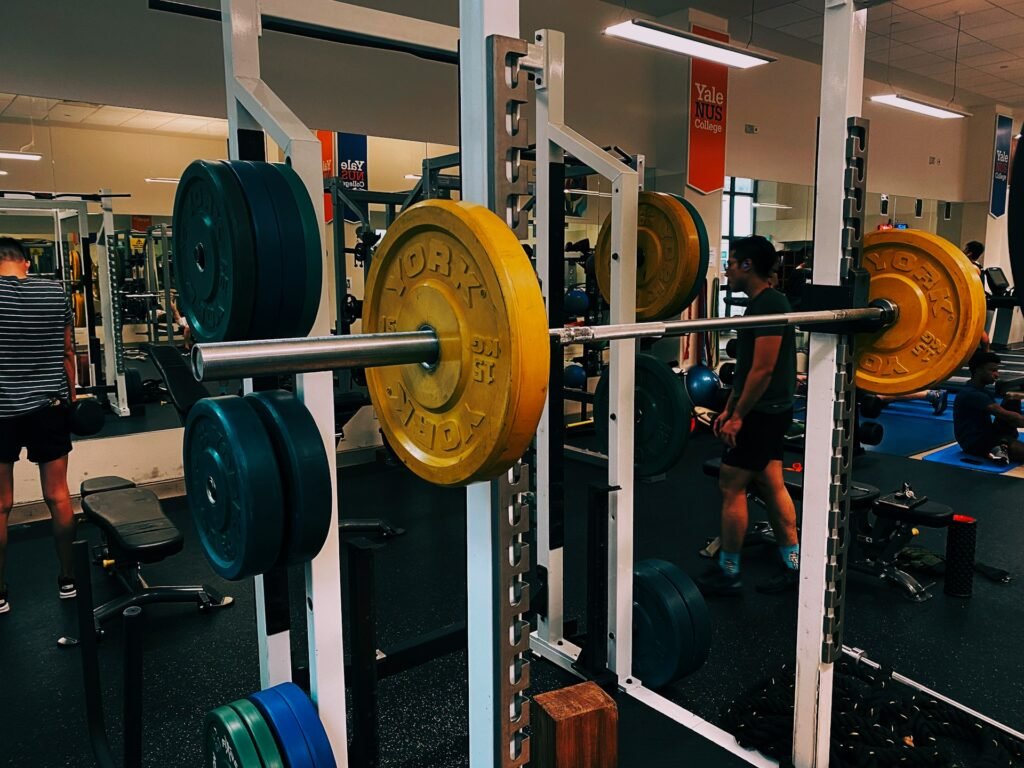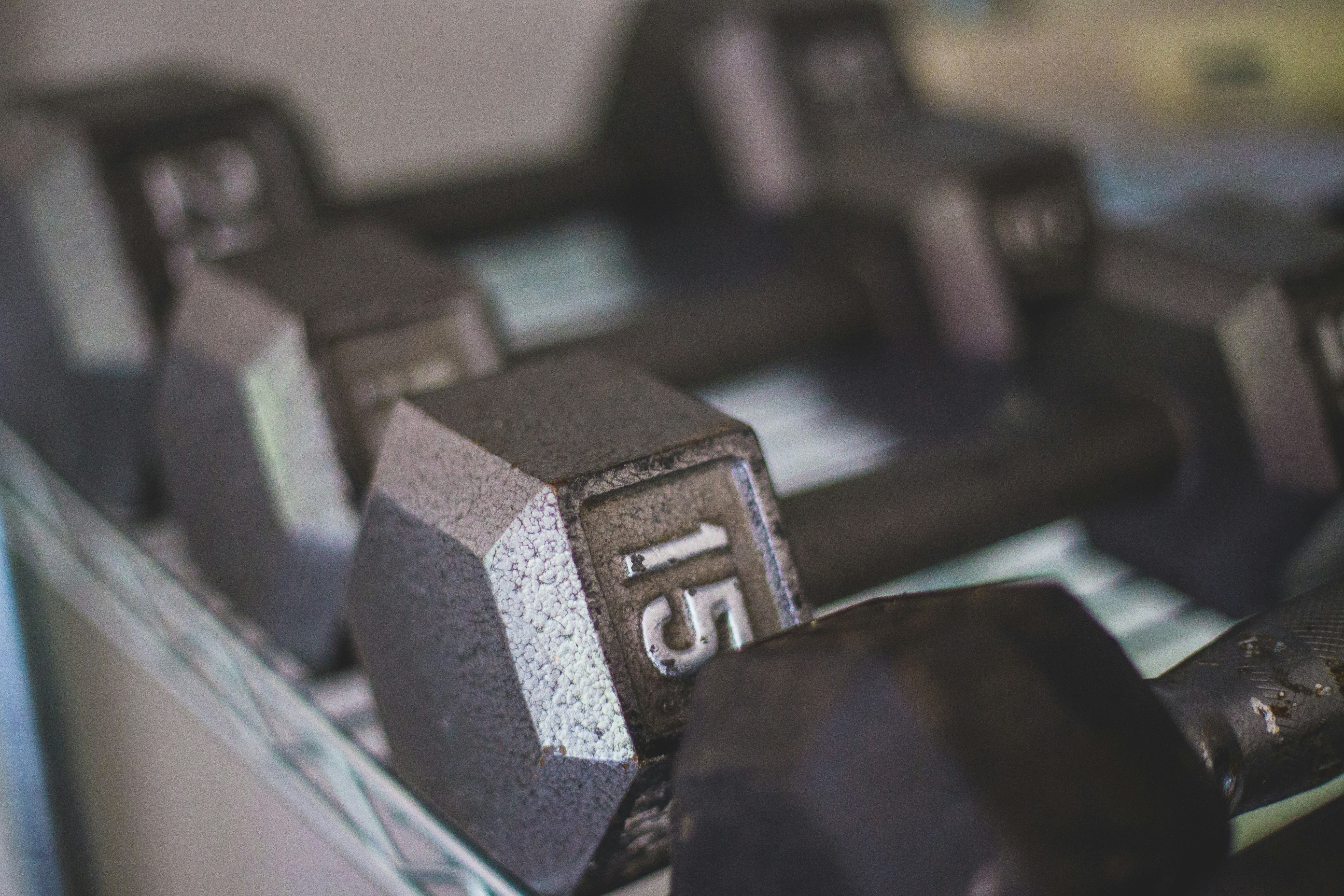
Photo by Keith Yap on Unsplash
Lateral raises are a staple exercise in many shoulder workouts, primarily targeting the side deltoids. This exercise is essential for building shoulder width and improving overall upper body symmetry. When performed correctly, lateral raises also engage secondary muscle groups including the front deltoids, which adds to the exercise’s versatility.
According to recent data, shoulder injuries are common among athletes and weight lifters, making proper shoulder training crucial. Lateral raises help to strengthen the shoulder muscles, potentially reducing the risk of injuries. The American Council on Exercise (ACE) points out that strengthening the deltoids can enhance joint stability and functional performance in daily activities (source).
Incorporating lateral raises into your routine is straightforward. Stand upright with a dumbbell in each hand, arms extended by your sides. Without using your legs, exhale and lift the dumbbells out to your sides until your arms are parallel to the floor. Hold for a second before lowering the dumbbells back to the starting position. For added benefits, pause for an extra second at the top of the movement to increase muscle engagement.
Training your shoulders with lateral raises can also complement other fitness goals. For instance, if you’re interested in improving your overall cardiovascular health, you might want to check out our article on Low-Impact Cardio for Bad Knees. Proper shoulder strength can make these low-impact exercises more effective by providing better posture and arm movement support.
Why You Might Need a Lateral Raises Alternative
Lateral raises are a fundamental exercise for targeting the side shoulders, specifically the outer portion of your shoulder muscles. They primarily engage the deltoid muscle group and are a staple in many workout routines. However, there are several reasons you might need an alternative to this exercise.
First, some people experience discomfort or pain in their shoulders when performing lateral raises. This can be due to improper form, a previous injury, or simply individual anatomical differences. In a study, 20% of gym-goers reported shoulder pain, with exercises like lateral raises often being a culprit[^1^].
Second, incorporating variety into your workout routine is crucial for preventing muscle adaptation and promoting balanced muscle development. Using different exercises can reduce the risk of overuse injuries and ensure that various muscle fibers are effectively targeted.
Third, the equipment available to you might not always be suitable. Lateral raises typically require dumbbells, but if you’re working out at a home gym with limited equipment, you might need to rely on resistance bands, cables, or machines instead.
Lastly, some variations or alternatives can focus on the same muscle groups but with different movement patterns, potentially offering better results or suiting your fitness level better. For example, the cable lateral raise and the lateral raise machine are excellent alternatives as they can provide constant tension and are often easier on the joints [^2^] (source).
Exploring these alternatives allows you to continue strengthening your shoulder muscles safely and effectively, while also keeping your workouts engaging and dynamic.
[^1^]: Example Study on Shoulder Pain in Gym-Goers [^2^]: More details on alternative exercises for lateral raises can be found here.
For more on maintaining joint health and effective exercise techniques, check our article on Low Impact Cardio for Bad Knees.
Exercise 1: Cable Lateral Raise
The cable lateral raise is an excellent alternative to the traditional dumbbell lateral raise for targeting the lateral deltoids. This exercise offers several benefits, including consistent tension throughout the range of motion, which helps in muscle activation and growth.
How to Perform the Cable Lateral Raise:
- Setup: Stand next to a cable machine, positioning the pulley at the lowest setting.
- Grip: Hold the handle with your outside hand, standing with feet shoulder-width apart. Your inner hand can hold the machine for stability.
- Lift: Slowly lift your arm to the side until it reaches shoulder height. Maintain a slight bend in your elbow to reduce strain on your joints.
- Lower: Gradually lower the weight back to the starting position.
Benefits of Cable Lateral Raise:
- Constant Tension: Unlike dumbbells, cables provide continuous resistance throughout the movement. This ensures the muscles are under constant tension, which can be more effective for muscle growth.
- Adjustability: The adjustable nature of cable machines allows for a variety of angles and resistance levels, catering to different fitness levels and goals.
- Muscle Isolation: This exercise isolates the lateral deltoid muscles more effectively, helping to improve shoulder definition and strength.
According to a study on muscle activation patterns, exercises using cables can significantly engage the target muscles, enhancing muscle hypertrophy and strength gains source.
For those looking to combine cardio with strength training, check out our article on low-impact cardio for bad knees for a balanced workout routine.
Exercise 2: Lateral Raise Machine
The lateral raise machine is an effective tool for targeting the deltoid muscles, specifically the middle deltoids. This machine provides a controlled setting to perform lateral raises, minimizing the risk of improper form and potentially reducing injury risk. According to a study published in the Journal of Strength and Conditioning Research, using machines for isolated muscle exercises like lateral raises can increase muscle activation by as much as 20% compared to free weights [^1^].
One of the main benefits of the lateral raise machine is its ability to maintain constant tension on the muscles throughout the entire range of motion. This constant tension is crucial for muscle hypertrophy, which is the growth of muscle cells. Moreover, the lateral raise machine is user-friendly and suitable for beginners who may not have mastered the form required for free weight lateral raises.
The machine also allows for easy adjustments to the weight, making it simple to progress and track improvements over time. This adjustability can help in achieving gradual overload, a key principle in muscle development.
Before using the lateral raise machine, it’s essential to adjust the seat and handles to the correct height to ensure you are in the optimal position to engage the middle deltoids effectively. Start with a weight that is manageable and gradually increase it as your strength improves.
For those looking to diversify their shoulder workouts, consider incorporating different cardio routines, such as those discussed in our article on low-impact cardio for bad knees, to enhance overall fitness without putting excessive strain on the shoulders.
[^1^]: Journal of Strength and Conditioning Research, 2017, Volume 31, Issue 2
Exercise 3: Seated Lateral Raise

Photo by Delaney Van on Unsplash
The Seated Lateral Raise is an effective exercise for isolating and strengthening the shoulder muscles, specifically the deltoids. Unlike standing variations, the seated position helps reduce momentum and provides better control, making it ideal for those aiming to focus purely on muscle engagement.
Steps to Perform Seated Lateral Raise:
- Starting Position: Sit on the edge of a flat bench with your feet shoulder-width apart. Hold a dumbbell in each hand with a neutral grip.
- Raise the Dumbbells: Slowly lift the dumbbells to shoulder height, keeping your elbows slightly bent. Ensure your movements are controlled.
- Pause and Lower: Pause briefly at the top, then gradually lower the dumbbells back to the starting position.
- Repetitions: Aim for 8-12 reps per set, focusing on maintaining form rather than lifting heavier weights.
Tips for Optimal Performance:
- Controlled Movements: Keep the reps slow and steady to maximize muscle contraction and minimize the risk of injury.
- Height Control: Raise only up to shoulder height to keep stress on the shoulders and avoid unwanted strain.
- Adjust for Comfort: If you experience discomfort, try tilting your pinkies slightly higher than your thumbs or turning your palms forward to reduce shoulder joint tightness.
According to Muscle & Strength, the Seated Lateral Raise is a beginner-friendly exercise that focuses solely on shoulder muscle isolation and does not engage secondary muscles. It’s a staple for those looking to increase shoulder strength and definition effectively.
For related exercises, you might find our at-home dumbbell shoulder workout insightful. This guide includes various strategies to enhance shoulder strength and flexibility.
Incorporating Alternatives into Different Workout Routines
Incorporating lateral raise alternatives into your workout routines can add variety and help in targeting shoulder muscles more effectively. Alternating between different exercises can keep your workout engaging and can help prevent plateaus. A typical strategy is to change your workout routines every few weeks or to rotate different exercises in your weekly sessions.
For example, if you usually perform dumbbell lateral raises, you could switch to cable lateral raises or use the lateral raise machine to provide different stimuli to the muscle. According to fitness experts, alternating exercises can challenge your muscles in new ways and potentially lead to better overall muscle development (Quora).
Resistance training recommendations often suggest hitting the same muscle groups at least twice a week with a recovery period of 48 to 72 hours in between (A series of studies–a practical protocol for testing muscular endurance recovery). Therefore, incorporating different variations of the lateral raise on different days can be beneficial. For instance, you might do dumbbell lateral raises on Monday and seated lateral raises on Thursday, allowing recovery time while still engaging the shoulder muscles consistently.
Additionally, mixing free weights and machines can optimize muscle engagement and joint stability. Free weights, like dumbbells, engage stabilizer muscles which can aid in overall functional strength, whereas machines can provide targeted resistance with lower risk of form breakdown. A balanced routine incorporating both free weights and machines can help ensure comprehensive shoulder development.
For more on ways to maintain an exciting and effective workout routine, consider reading our article on the benefits of exercising daily.
Summary and Next Steps for Shoulder Training
Incorporating alternatives to lateral raises into your shoulder training routine can enhance both strength and flexibility, crucial for overall shoulder health. With exercises like cable lateral raise, lateral raise machine, and seated lateral raise, you target various parts of the shoulder and rotator cuff muscles, which play a key role in stabilizing the shoulder joint.
Rotator cuff muscles are vital for movements such as lifting the arm and rotating it within its socket. Strengthening them can prevent common shoulder issues like rotator cuff tears, tendonitis, and bursitis. Regularly working on these muscles also reduces the risk of shoulder impingement and adhesive capsulitis (frozen shoulder) [^1^][^2^].
It’s important to start any new shoulder exercise regimen gradually. Initially, perform exercises using your body weight or light weights to ensure you maintain proper form and prevent injury. Over time, you can increase resistance by incorporating heavier weights or resistance bands to continue building muscle strength and endurance.
Always consult with a healthcare provider or a physical therapist before starting new exercises, especially if you have pre-existing conditions or are recovering from an injury. For further guidance on related exercises, check out our at-home dumbbell shoulder workout page for more ideas on how to diversify your shoulder training program.
[^1^]: Source: Shoulder-Strengthening Exercises by Laura Inverarity, DO [^2^]: Source: American Academy of Orthopaedic Surgeons